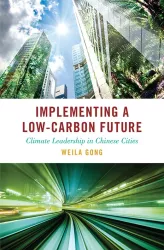Abstract
China committed itself to reduce the carbon intensity of its economy (the amount of CO2 emitted per unit of GDP) by 40–45% during 2005–2020. Yet, between 2002 and 2009, China experienced a 3% increase in carbon intensity, though trends differed greatly among its 30 provinces. Decomposition analysis shows that sectoral efficiency gains in nearly all provinces were offset by movement towards a more carbon-intensive economic structure. Such a sectoral shift seemed to be heavily affected by the growing role of investments and capital accumulation in China's growth process which has favoured sectors with high carbon intensity. Panel data regressions show that changes in carbon intensity were smallest in sectors dominating the regional economy (so as not to endanger these large sectors, which are the mainstay of the provincial economy), whereas scale and convergence effects played a much smaller role.
Read the full text here (log in may be required): http://www.nature.com/nclimate/journal/v4/n11/full/nclimate2388.html
Guan, Dabo, Stephan Klasen, Klaus Hubacek, Kuishuang Feng, Zhu Liu, Kebin He, Yong Geng and Qiang Zhang. “Determinants of Stagnating Carbon Intensity in China.” Nature Climate Change, 2014





